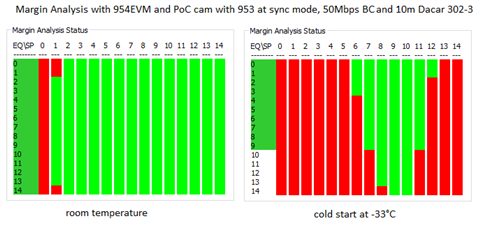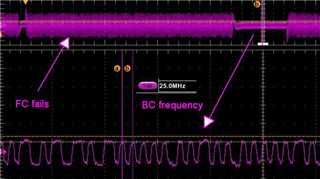Other Parts Discussed in Thread: ALP
Hello E2E team,
we paired a PoC camera with 953 SER with a ECU with 960 DES resp. 954 DES.
At standard operation temperature there is a stable link, no CSI-2 errors at all, data streaming without errors and a sufficiently good eye diagram.
If we lower the temperature below -20°C down to -40°C for a longer time, the RX_PORT_STS1 at 960 0x4D becomes worser and worser, from 0x03 (ok) to 0x13 than 0x33 and finally 0x30 with link has been lost completely.
What could be the reason why?
Despite of synchronous mode with REFCLK = 25 MHz at DES there is a BC frequency of 25Mbps (0x58 -> 0x5d).
Moreover we observed at 953 before getting an issue at reg. 0x5A -> Internal Temp is below SENSE_T_LO limit. What does it mean? Are there any consequences?
Regards
Torsten







